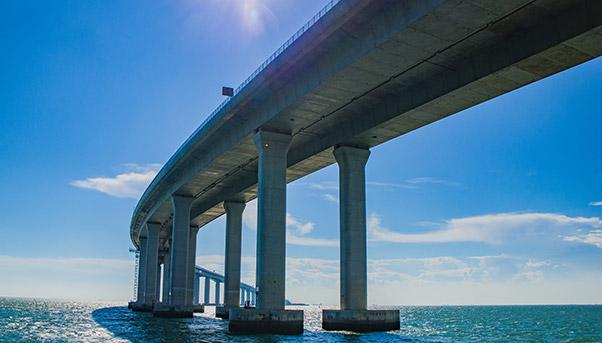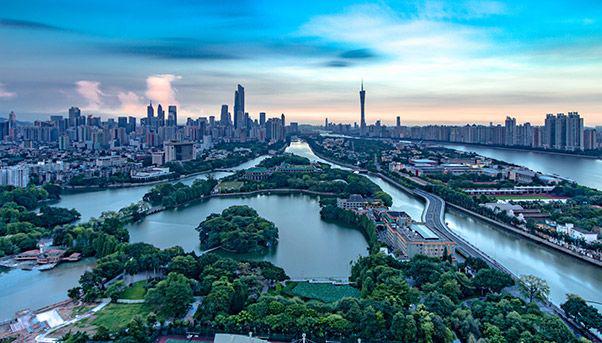
Here it is, at last. The world’s longest bridge – and the latest example of China’s engineering prowess – was inaugurated last week after nearly a decade of work. The Hong Kong-Zhuhai-Macau Bridge connects Hong Kong and Macau by a ribbon of 55 kilometers of cement and steel, linking them to 11 other cities in the Greater Bay Area, China’s high-tech cluster that aims to become a rival to Silicon Valley.
This engineering feat is also a show of strength, not only for the infrastructure’s size and $20-billion price tag, but also for the impact it will have on the economy of the surrounding region.
«The bridge is not just a mega transport infrastructure jointly built by Guangdong, Hong Kong and Macau», Hong Kong’s secretary for transport and housing, Frank Chan Fan, told the British newspaper The Guardian. «The collaboration between Guangdong, Hong Kong and Macau in terms of trade, finance, logistics and tourism will be strengthened. Hong Kong will assume a more proactive role in the development of the Greater Bay Area».
Construction of the Hong Kong bridge
The construction of the Macau bridge in Hong Kong started in 2009 to build the three cable-stayed bridges, as well as an underground tunnel of 6.7 kilometers that is needed to keep the sea route free for passing ships.
Special building material and techniques were used to enable the infrastructure to withstand winds of up to 340 kilometers per hour. The towers holding up the bridge are shaped like dolphins, in honor of the white dolphin species that inhabits the area.
Although the Hong Kong-Zhuhai-Macau Bridge has immediately become an icon of engineering might, its construction has not been without moments of tension. The project was due to be completed in 2016. Several accidents took place on its work sites, and stabilizing the artificial islands built in the middle of the sea took longer than planned.
The bridge is exceptional not only for its structure, but also for the rules governing who crosses it. The bridge is lined with cameras equipped to monitor drivers for signs of fatigue. If they yawn more than three times in the space of 20 seconds, the cameras will to sound an alarm at the bridge’s control center. Moreover, drivers crossing the bridge will be forced to wear heart monitors.

Guangzhou City
Special restrictions to cross the bridge
But that’s not all. Not everyone will be allowed to cross the bridge in the first place. Citizens coming from Hong Kong will need special permission to transit, which can be obtained by paying a certain level of taxes in China, by making significant donations to charities in the Guangdong area, or by being a member of a political organization. Everyone else can cross solely in authorized private transport. No public transportation is allowed.
Despite these restrictions, the National Reform Commission of Hong Kong calculated a few years ago that the bridge would be crossed by between 180 million and 240 million vehicles in its first four years.
A unique bridge due to its strategic position
Another way the bridge is exceptional is a result of its geography. In Hong Kong and in Macau, drivers ride on the left-hand side of the street, while on the Chinese mainland they drive on the right. Finding the best solution was the topic of more than a few discussions during the design phase of the bridge. In the end, the choice was to compromise. About halfway across, there is an intersection where cars stop and change lanes.
For these reasons and many more, the bridge is unique. It is also strategic for the Chinese government, which aims to bring Hong Kong and Macau (which are known as Special Administrative Regions) ever closer to the rest of the country. It’s not by chance that the inauguration of the bridge – presided over by China’s President Xi Jinping — comes just a month after the completion of another massive transport link between China and Hong Kong: the $11-billion high-speed railway Vibrant Express, which connects Hong Kong with the mainland in just 20 minutes.
The new train line, along with the Macau bridge, shows how important it is to China to integrate Hong Kong with the rest of the country, which in turn will give a push to economic development of the Greater Bay Area.
The region of 70 million people is one of China’s economic engines. According to estimates by HSBC bank, the area’s economy produces an annual gross domestic product of $1.5 trillion, which will rise to $2.8 trillion by 2025. It is a global technology hub hosting China’s most advanced universities and home to the headquarters of several mulitnationals. The railway and the bridge will boost the fortunes of this region still further, integrating it with Hong Kong’s financial and services know-how, and nourishing China’s dreams for world leadership.


